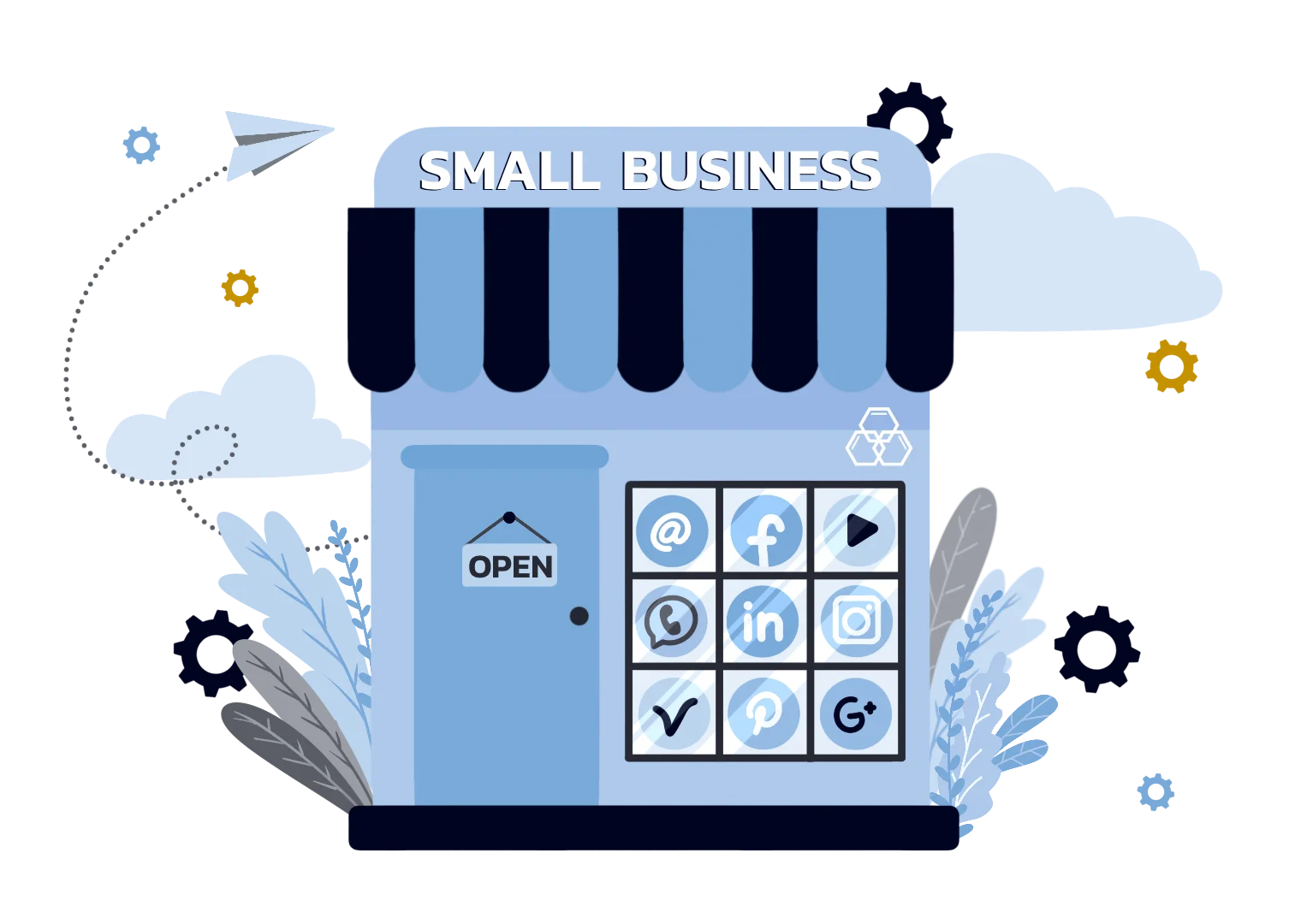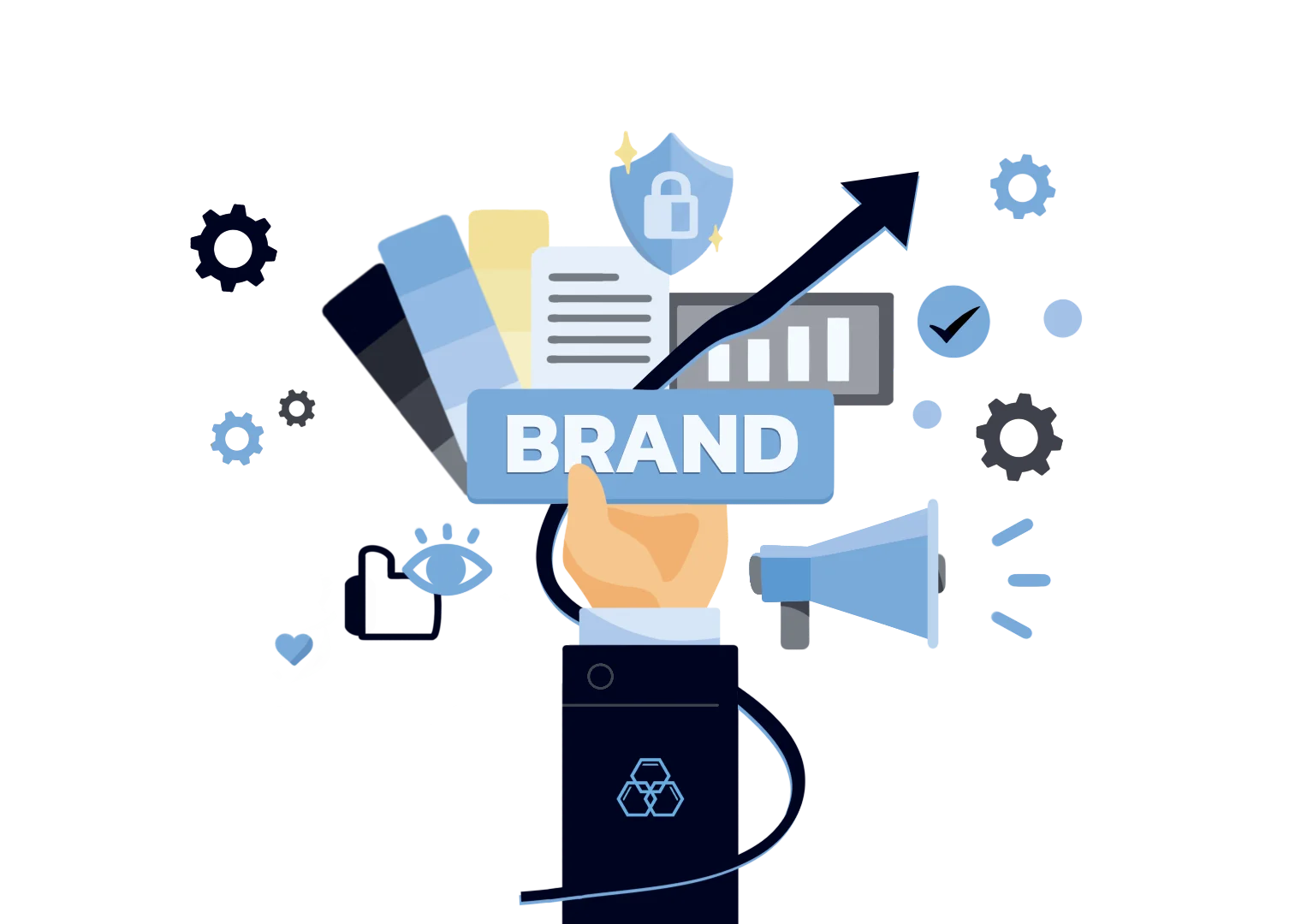Branding and advertising are like the dynamic duo of the business world—yet they're often mistaken for the same thing. So, what exactly is the difference?
But before comparing the two, we should start by learning branding and advertising.

Background: What is Advertising?
Put simply, advertising is the act of publicly promoting something, usually a product, service, or brand message, to attract attention and generate a desired response. For businesses, it's about putting your offerings into the world, enticing potential customers, and turning interest into action.
Here are some classic examples of advertising that you'll recognize:
- TV and Radio Commercials - the catchy jingles and visuals interrupting your favorite show or commute.
- Print Advertisements - The glossy magazine ads or billboards that line the highway.
- Digital Advertising - Banner ads, social media promotions, and search engine results.
- Influencer Marketing - Partnering with popular individuals to promote your brand.
Why is Advertising Important for Businesses?
Advertising might feel like an expense, but for businesses, it's actually a powerful investment. Here's why advertising matters:
- Increased Visibility: In a crowded marketplace, advertising cuts through the noise and puts your business in the spotlight.
- Building Brand Awareness: Consistent advertising helps people recognize your brand name, logo, and message – making you the familiar choice.
- Attracting New Customers: Advertising widens your reach, introducing potential customers to your business who might not find you otherwise.
- Promoting Products/Services: Advertising showcases what you do best, whether launching a new offering or reminding people of old favorites.
- Boosting Sales: Ultimately, advertising drives action. A well-crafted campaign helps translate interest into purchases.

Background: What is Branding?
Basically, branding is the overall impression you leave on your customers. Branding encompasses everything that shapes how people perceive your company.
Some key elements of branding:
- Brand Identity: This includes your logo, color palette, website design, and typography – all the things that make you recognizable.
- Brand Message: The core values, purpose, and unique personality your business embodies. Is your brand playful, luxurious, eco-conscious?
- Brand Voice: This is how you communicate – your tone in everything from marketing materials to customer service interactions.
- Customer Experience: The feeling someone gets whenever they interact with your business.
Think about brands like Apple, with its sleek designs and emphasis on innovation, or Coca-Cola, with its classic red, cheerful vibe and focus on shared experiences. These brands have gone beyond advertising a product; they've created strong identities that resonate with people on a deeper level.
What are the Benefits of a Strong Branding?
A strong brand isn't just about looking good; it brings a host of tangible benefits to your business:
- Customer Recognition: A consistent, memorable brand helps you stand out and makes it easy for people to identify your business.
- Increased Trust and Loyalty: A well-defined brand communicates your values, which builds trust and fosters long-lasting customer relationships.
- Competitive Advantage: Strong branding sets you apart from the competition and makes you the top choice for customers.
- Premium Pricing: Customers are often willing to pay more for a brand they trust and recognize.
- Attracting Top Talent: A successful brand instills pride and helps lure the best people to your team.
- Resilience: A powerful brand gives your business staying power, helping it weather changes and bounce back from challenges.
Branding and Advertising: Key Differences
While branding and advertising work together, understanding their unique roles is crucial. Let's break down those distinctions:
1. Scope
Think of your brand as your organization's blueprint. The brand's identity encompasses everything from its mission and core values to its visual identity and how it makes customers feel. Just like a blueprint guides building construction, branding influences all future decisions and interactions within your business.
Apple is a perfect example of this–Its brand is synonymous with sleek design, user-friendly technology, and innovation.
These elements aren't just a marketing ploy; they permeate everything the company does. This influences everything from the design of their products to the look and feel of their stores.
On the other hand, consider advertising as a set of tools designed to get your message out to your audience. It utilizes specific marketing strategies, like commercials, social media posts, or print ads, each thoughtfully crafted to highlight a product, service, or message.
A back-to-school ad campaign targeting parents may focus on deals or highlight a product's specific features related to school needs, providing a clear example of advertising in action.
2. Goals
Branding is a marathon, not a sprint. Brand marketing focuses on building lasting connections with your audience, aiming to create an emotional bond that fosters trust, recognition, and preference even when competitors are vying for attention.
Success in this area builds lasting customer loyalty and brand equity. Think about outdoor brands like The North Face – their branding evokes images of adventure and connection to nature, resonating with their target audience and solidifying long-term relationships.
Conversely, advertising usually operates with short-term, measurable goals. A campaign might focus on increasing website traffic during a promotion, boosting sign-ups for a new class, or encouraging customers to try a limited-time product.
Advertising success can frequently be measured through direct feedback like sales numbers or website analytics. A Black Friday sale promoted via social media and email channels is a great example – success hinges on immediate purchases and website visits generated during the campaign.
3. Messaging
Brand messaging communicates the soul of your business. They answer the questions of why you exist, the unique value you offer, and the beliefs you stand for. Instead of focusing on the features and benefits of a specific product, branding seeks to build a deeper resonance with your audience.
TOMS Shoes' "One for One" model exemplifies this. It's woven into their brand message, communicating a desire for social good that connects with consumers on a level beyond the products themselves.
Advertising, on the other hand, focuses on the immediate value proposition. It asks: What is this product? How will it benefit the customer? Why should they buy it right now? The message emphasizes tangible reasons to take action.
For example, an ad about a new laundry detergent will likely emphasize specific cleaning power, scent, or stain-removal abilities to convince customers it's the best choice on the market.
How do Branding and Advertising Work Together?
When branding and advertising work together seamlessly, they create a force that propels your business forward. Consistent branding establishes trust and familiarity, making people more receptive to your advertising messages.
A prime example is a fast-food chain known for its playful personality and value-oriented message (branding). Launching clever, funny ads promoting new menu items (advertising) solidifies this positive brand image in consumers' minds while sparking interest and encouraging them to try those new products.
Here's a step-by-step guide to help you create a dynamic duo out of your branding and advertising efforts:
Define Your Core Brand
This is the soul-searching stage for your brand identity. Ask yourself profound questions: What's your company's driving purpose beyond profit? What are the core beliefs you won't compromise on? What sets you apart from every other business?
Imagine your brand as a person – what personality traits would it have? For example, a sustainable clothing company might define its core brand as eco-conscious, minimalist, and focused on quality over fleeting trends.

Develop a Brand Style Guide
This is your rulebook for visual consistency and the overall brand strategy. It includes your logo, its variations, and how it should be used. It defines your color palette (primary and secondary colors), the fonts you favor, and even the style of imagery you'll use.
Your brand voice should also be detailed. Is it formal and sophisticated, or friendly and conversational? Your style guide ensures everyone, from designers to marketers, is on the same page.

Align Advertising with Your Brand
Every ad, whether a sleek billboard or a quick Instagram post, becomes a mini-ambassador for your brand. Using your style guide, ensure each ad campaign's colors, fonts, and overall vibe match your brand personality.
For example, if you're a sustainable clothing company, your ads might feature natural color palettes, simple layouts, and messaging that evokes feelings of tranquility.
Use Advertising to Tell Your Brand Story
Brand advertising is more than listing product features. It's about showcasing what using your product or service feels like. Are you about the warmth of family meals? The rush of trying something adventurous? The relief of having one less headache to deal with?
For example, a home security company marketing strategy is running ads showing their security system and the peace of mind a family enjoys knowing they're protected—that's the emotional hook aligned with their brand.

Track and Measure Results
Data is your friend! Keep tabs on how people recognize your brand, the traffic various ad campaigns bring to your website, and the overall sentiment expressed in customer reviews and social media mentions.
This will help you identify which marketing efforts resonate most with your audience and how your branding is perceived. You can then adjust your strategies to make them even more powerful.
Work With Branding and Advertising Experts With Evolv!
Creating effective branding strategies and impactful advertising campaigns might be challenging, especially for new brands or small businesses. Partnering with an agency can be invaluable in this process. Agencies like Evolv bring:
- Strategic Insights: Branding and advertising agencies delve deep to understand your business, target customers, and unique goals. They then design a branding strategy tailored to your success.
- Creative Execution: Agencies have teams of copywriters, designers, and marketing and brand management professionals who can turn strategic ideas into visually striking and persuasive campaigns.
- Market Knowledge: Agencies stay ahead of trends through market research, ensuring your efforts are modern and effective in the ever-evolving landscape.
If you're ready to see your brand come alive, check out our blog for more in-depth marketing tips and insights. Let us know how Evolv can help you —we'd love to discuss elevating your business through exceptional branding and advertising!







